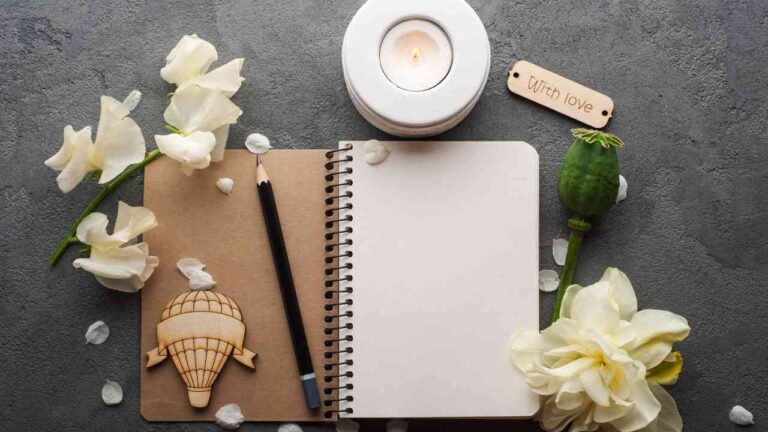Key Takeaways
- Mindfulness exercises for creativity help quiet the inner critic and enhance focus.
- Practices like mindful breathing, sensory observation, and doodling can spark new ideas.
- Research shows mindfulness improves cognitive flexibility and problem-solving skills.
- Building a daily mindfulness routine can supercharge your imagination.
- Creativity is a skill that can be nurtured with consistent practice.
Introduction
Have you ever felt stuck in a creative rut, staring at a blank page or canvas, wondering where your inspiration went? You’re not alone. Creativity isn’t just a gift—it’s a skill that can be nurtured and developed. And one of the most powerful tools to unlock your creative potential is mindfulness exercises for creativity. By combining mindfulness practices with intentional creativity-boosting techniques, you can supercharge your imagination and bring your ideas to life.
In this guide, we’ll explore how mindfulness can transform your creative process, provide actionable exercises, and share expert tips to help you tap into your inner genius. Whether you’re an artist, writer, entrepreneur, or simply someone looking to think outside the box, these practices will help you break through barriers and unleash your creativity.
Why Mindfulness and Creativity Go Hand in Hand
Before diving into the exercises, let’s understand why mindfulness is such a powerful tool for creativity. Mindfulness is the practice of being fully present in the moment, free from distractions and judgment. When applied to creativity, it helps you:
- Quiet the inner critic: Mindfulness silences the voice that says, “This isn’t good enough.” By staying present, you learn to observe thoughts without judgment, allowing your creative ideas to flow freely.
- Enhance focus: Mindfulness trains your brain to stay present and fully engaged with your creative task. This sharpens your attention, helping you dive deeper into your work without distractions.
- Boost curiosity: Mindfulness opens your mind to new ideas and perspectives. By observing the world with fresh eyes, you notice details and connections that spark innovative thinking.
- Reduce stress: Mindfulness lowers anxiety, which often blocks creative thinking. A calm mind is more open to exploring new ideas and taking creative risks.
Research shows that mindfulness can rewire the brain, improving cognitive flexibility and problem-solving skills—key components of creativity. Now, let’s explore how you can harness this power.
5 Powerful Mindfulness Exercises for Creativity
Mindfulness exercises are a fantastic way to spark your imagination and help you think more creatively. Below, we’ve broken down five simple yet effective practices that you can start using today. Each exercise includes step-by-step instructions, so you can easily follow along and make the most of your creative journey.

1. Mindful Breathing for Clarity
Mindful breathing is the foundation of mindfulness. It helps clear mental clutter and prepares your mind for creative thinking.
How to Do It:
- Find a quiet, comfortable spot to sit.
- Close your eyes and take a deep breath in through your nose for 4 counts.
- Hold your breath for 4 counts.
- Slowly exhale through your mouth for 6 counts.
- Repeat this cycle for 5 minutes.
Why It Works: This exercise calms your mind, reduces stress, and helps you focus. By slowing down your breathing, you create space for fresh ideas to emerge.

2. Sensory Observation
Engaging your senses is a powerful way to ground yourself in the present moment and open your mind to new perspectives.
How to Do It:
- Sit or stand in a comfortable position.
- Take a moment to notice 5 things you can see, 4 things you can touch, 3 things you can hear, 2 things you can smell, and 1 thing you can taste.
- Focus on each sense one at a time, without judgment.
Why It Works: Sensory observation sharpens your awareness and helps you notice details you might otherwise overlook. This practice can spark new ideas and inspire creative thinking.

3. Mindful Doodling
Doodling isn’t just for kids—it’s a great way to tap into your subconscious creativity.
How to Do It:
- Grab a pen and paper.
- Let your hand move freely across the page without thinking too much.
- Don’t worry about making something “perfect” or “meaningful.” Just let your creativity flow.
Why It Works: Mindful doodling helps bypass your inner critic and allows your subconscious mind to take the lead. It’s a fun and relaxing way to unlock new ideas.

4. Body Scan Meditation
A body scan helps you relax and release tension, creating space for creative ideas to flow.
How to Do It:
- Lie down or sit in a comfortable position.
- Close your eyes and take a few deep breaths.
- Slowly scan your body from head to toe, noticing any areas of tension.
- As you focus on each part of your body, imagine releasing any tightness or stress.
Why It Works: This practice relaxes your body and mind, making it easier to focus and think creatively. It’s especially helpful if you’re feeling stuck or overwhelmed.

5. Gratitude Journaling
Gratitude shifts your mindset to positivity, which is a fertile ground for creativity.
How to Do It:
- Set aside 5 minutes each day to write in a journal.
- List 3 things you’re grateful for. They can be big or small—anything that brings you joy.
- Reflect on why these things matter to you.
Why It Works: Gratitude journaling helps you focus on the positive aspects of your life, which can inspire new ideas and boost your creativity.
Quick Reference Table
| Exercise | Steps | Benefits |
| Mindful Breathing | Inhale (4 counts), Hold (4 counts), Exhale (6 counts) for 5 minutes. | Clears mental clutter, enhances focus. |
| Sensory Observation | Notice 5 things you see, 4 you touch, 3 you hear, 2 you smell, 1 you taste. | Sharpens awareness, sparks new ideas. |
| Mindful Doodling | Let your hand move freely on paper without overthinking. | Bypasses inner critic, unlocks creativity. |
| Body Scan Meditation | Scan your body from head to toe, releasing tension. | Relaxes body and mind, improves focus. |
| Gratitude Journaling | Write 3 things you’re grateful for daily. | Shifts mindset to positivity, inspires creativity. |
The Science Behind Mindfulness and Creativity
Studies have shown that mindfulness practices can significantly enhance creative thinking. For example:
- A 2014 study published in Frontiers in Psychology found that mindfulness meditation improves divergent thinking, a key aspect of creativity.
- Research from Leiden University revealed that mindfulness exercises enhance cognitive flexibility, allowing individuals to generate more innovative ideas.
These findings highlight the importance of incorporating mindfulness into your daily routine to boost creativity.
How to Create a Mindfulness Routine
Building a mindfulness routine doesn’t have to be complicated. Here’s a simple step-by-step guide to help you get started and stay consistent:
- Set a Time: Dedicate 10-15 minutes daily to mindfulness exercises. Choose a time that works best for you, whether it’s in the morning, during lunch, or before bed. Consistency is key.
- Choose a Space: Find a quiet, comfortable spot free from distractions. This could be a cozy corner in your home, a park bench, or even your office during a break.
- Start Small: Begin with basic exercises like mindful breathing or body scans. These simple practices are easy to follow and help you build a strong foundation for more advanced techniques.
- Track Progress: Keep a journal to note how your creativity improves over time. Write down your thoughts, ideas, and any changes you notice in your creative process.
By following these steps, you’ll create a mindfulness routine that fits seamlessly into your life and helps you unlock your creative potential.
Benefits of Mindfulness Exercises
Here’s a quick overview of the benefits you’ll experience:
| Benefit | Description |
| Enhanced Focus | Stay present and engaged with your creative tasks. |
| Reduced Stress | Lower anxiety levels to think more clearly. |
| Improved Problem-Solving | Approach challenges with a fresh perspective. |
| Increased Curiosity | Open your mind to new ideas and possibilities. |
| Greater Emotional Balance | Maintain a positive mindset, even when facing creative blocks. |
Common Myths About Mindfulness and Creativity
Let’s debunk some common misconceptions about mindfulness and creativity to help you better understand their true potential:
- Myth: Mindfulness is only for relaxation.
Fact: Mindfulness is also a powerful tool for enhancing creativity and focus. It helps you stay present, reduce mental clutter, and think more clearly. - Myth: Creativity is a talent you’re born with.
Fact: Creativity is a skill that can be developed with practice. Mindfulness exercises can help you unlock and nurture your creative abilities over time. - Myth: Mindfulness requires hours of meditation.
Fact: Even 5-10 minutes of mindfulness practice a day can make a significant difference. Small, consistent efforts can lead to big improvements in creativity and focus.
By understanding these facts, you can approach mindfulness and creativity with confidence and start reaping their benefits right away.
Conclusion
Mindfulness exercises for creativity are a game-changer for anyone looking to supercharge their imagination and break through creative blocks. By practicing techniques like mindful breathing, sensory observation, and gratitude journaling, you can quiet your inner critic, enhance focus, and spark new ideas.
Research shows that mindfulness not only reduces stress but also improves cognitive flexibility, making it easier to think outside the box. Whether you’re an artist, writer, or simply someone seeking fresh perspectives, these practices can help you unlock your creative potential.
Start small, stay consistent, and watch as your creativity flourishes. Remember, creativity isn’t about perfection—it’s about exploration and enjoying the process. So, take a deep breath and let your imagination soar!







